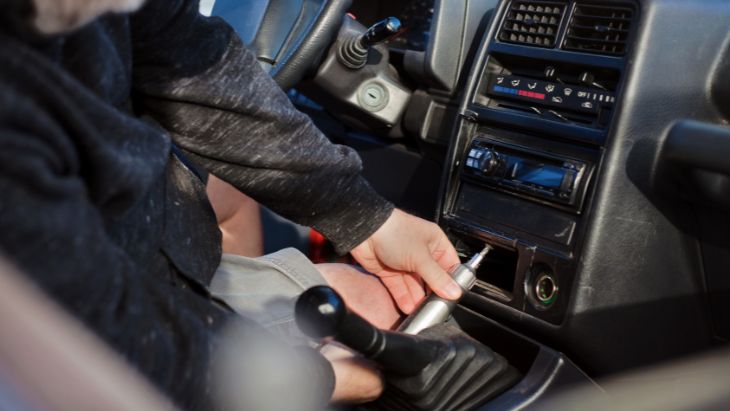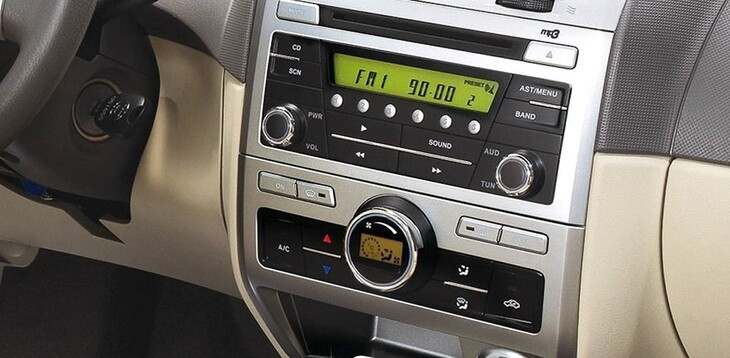A wiring harness makes it possible to wire a car stereo with little effort. It allows you to connect your car stereo to the car wiring in a simple plug-and-play connection. Sometimes, you may not have a factory harness in your car or the car stereo doesn’t come with a wiring harness. In other situations, you may accidentally damage the wiring harness when replacing a factory head unit.
Regardless of your situation, this article will guide you on how to wire a car stereo without a harness.
Getting Started
Before proceeding with wiring your head unit without a harness, you need to know the functions of all the cables. There’re several different cables that connect to the car stereo. The cables are colored differently. Each color represents a certain function.
The cables in a harness, their colors, and functions include:
1. Power cables
The power cables in a harness feed the car stereo with power from the car battery. Without connecting the power cables properly, your car stereo won’t power up. Also, connecting them wrongly can damage your car stereo.
Power cables include yellow, black, and red. The yellow wire connects to the car battery for constant power supply whereas the black wire grounds the stereo. On the other hand, the red wire assists in turning the car stereo on and off.
2. Speaker wires
Another set of cables is the speaker wires. They come in pairs. The stripped wires are negative speaker terminal wires whereas the wires without stripes are the positive speaker terminal wires. The white wires are for connecting the left front speakers whereas the gray wires are for connecting the right front speakers. The green wires are for connecting the left rear speakers whereas the purple wires are for connecting the right rear speakers.
3. Brightness
You’ll find two orange wires in the stereo connection. These wires are meant for brightness. One of the orange wires increases brightness whereas the other lower brightness. However, some cars don’t come with these wires, especially older models.
4. Antenna
You’ll see a blue wire, which is meant for powering the antenna and controlling the radio signal. A pure blue wire is for connecting AM/FM frequencies. A blue wire with white stripes is for connecting to AM/FM frequencies and connecting to media and Bluetooth.
Steps To Wire a Car Stereo without a Harness

Now that you know the role of the cables in a car stereo, you can proceed to hook up your car stereo to the wiring without a harness. Here’s how to go about it:
A. Wiring a car stereo without a factory harness
Although you can use a harness adapter for a plug-and-play stereo installation, someone may have cut the factory harness when installing a car stereo. Next, they solder the wires into the stereo. If you remove the stereo in the future, you’ll be left with bare cables.
Also, you may want to replace a factory head unit with an aftermarket head unit. In such instances, most factory harnesses might not fit into aftermarket stereos. Thus, you’ll have to cut the harness for a new car stereo installation.
Step 1- First, turn off the car engine if it’s running. Next, disconnect the negative terminal of the car battery. Doing so will prevent short circuits that can damage the car stereo and other electronics in your car.
Step 2- Strip off a few inches of the wire insulation. You should do so for the wires in your car and the wires on the new car stereo harness.
Step 3- Connect the wires that match in color. For instance, yellow should connect to yellow, and red should connect to red. Also, take note of the stripped wires. For instance, a striped white wire on the car stereo should be connected to the striped white wire in your vehicle.
Before connecting two wires, insert one of the wires into a heat shrink tubing. Then connect the wires together.
Step 4- Soldier the wires together for a secure connection. Next, move the heat shrink tubing over the bare connection point. Apply heat over the heat shrink tubing to insulate the wire.
Step 5- Connect the battery and start the engine to test the car stereo. If everything sounds right, turn off the engine and mount the car stereo on the deck.
B. Make your own head unit harness
If you don’t have a harness and you don’t like the idea of soldering wires together, you can make your own car stereo harness. A car stereo harness will make it easier to upgrade the head unit in the future. However, be ready to do some fabrication work.
Step 1- Get a pinout diagram for your car stereo. You can easily do an internet search using the model number of your car stereo. If you can’t find a pinout diagram, you’ll have to connect the wires directly.
Step 2- Get a rectangular connector that matches the size of your car stereo. Most car stereos fit a 2-row rectangular connector. The connector often has a female socket with through-holes for inserting the wires.
Sometimes, you may fail to find a connector that has the right spacing of the pins. Also, you may fail to find a connector with the right number of pins. Pin spacing is very important. However, the number of pins shouldn’t be a major concern. You can cut a larger connector to the required size or use several smaller connectors to fit.
Step 3- Once you get a pinout diagram for your car stereo and a fitting rectangular connector, solder the factory wires in place. To do this, take each wire and put it in the right pinhole on the connector with the help of the pinout diagram. Put a heat shrink tubing over each wire to prevent short-circuiting.
Step 4- Insert the harness into your car stereo. Start your car engine and test your car stereo. If everything sounds right, mount the car stereo into the deck and enjoy your upgraded car stereo.
Conclusion
After going through this article on how to wire a car stereo without a harness, you’ll realize it’s something possible to do. You just need to be a DIY handy audiophile to get it right. You can choose between soldering the wires together and making your own harness. Ensure you get the connections right to avoid damaging your new car stereo or other electronics in your car.
Michael Evanchuk is a San Francisco-based sound engineer with 20 years’ experience installing, troubleshooting, and repairing commercial, automotive, and household sound equipment. Evanchuk owns an auto stereo center, where he offers highly competitive car audio installation and repair services. He has written dozens of articles on different sound engineering topics, all of which have been published in leading journals, blogs, and websites.






